For a traveler who wants to be transported to someplace completely different from Western life, Morocco can be the adventure of a lifetime.”Morocco is thrillingly exotic,” says Jeannie Ralston, founder of NextTribe. “From the smells–cumin and saffron in the markets, mint tea in the cafes–and the sounds of calls to prayer five times a day, your senses are fully activated.”
Simply exploring the legendary souks of Marrakesh – overflowing with energy, and brimming with extraordinary crafts – would be worth the trip. But add to that the opportunity to learn about a North African culture; to see the undulating sands of the Sahara Desert as well as the stunning Atlas Mountains; to ride a camel and camp out under a sweeping starry sky, and you begin to understand the power of this place.
Are you ready for your own Moroccan adventure? Our trip to this fascinating country in January 2025 sold out quickly. We’ve just added an option for January 2026 so that you can plan ahead. Join our small group for our specially curated 12-day tour.
There’s the excitement of wending your way through ancient walled cities and gazing out at vast landscapes; the delight to be found in tasting tagines and sipping mint tea. But at every moment, and around every corner, it’s about immersing yourself in the soul of this fabled country, where history, hospitality, and natural beauty converge.
Morocco’s Rich Tapestry: A Glimpse into History
Morocco’s history is a rich tapestry woven with threads of Berber, Arab, African, and European influences. Marrakesh, with its ancient medina and labyrinthine souks, serves as the perfect gateway to understanding Morocco’s cultural heritage. As you wander through the narrow alleyways of the medina, adorned with intricately carved arches and vibrant mosaics, you’ll be transported back in time to a bygone era of bustling trade and flourishing craftsmanship.
As you travel farther afield, you’ll see mesmerizing sweeping landscapes that are grand, gorgeous, and often more than a little mysterious to those of us used to the West. The recorded history of Morocco dates back to around the 8th to the 6th centuries BC, and through the centuries, it has had more than its share of invasions over the years.
Given its strategic location, many forces swept through Morocco, each leaving a powerful imprint on the culture.
When you consider its strategic location, you may see why so many forces swept through, each leaving a powerful imprint on the culture. This mountainous country is located in North Africa across the Strait of Gibraltar from Spain (the travel times between Spain and Morocco can be as short as one hour by ferry to make that crossing, depending on which ports you choose). This location means it’s long been at the crossroads of both African and European cultures.
To scoot ahead to modern history, Morocco was a French protectorate from 1912 to 1956, when it gained independence, and has been a fairly stable nation since then, but packed with fascinating influences that make it a unique place to visit.
How to Get There and Best Time to Travel to Morocco
Your Moroccan adventure will typically begin with a flight into Marrakesh, with its blend of markets, restaurants, parks, and other attractions that delight visitors. It’s the fourth largest of the major cities. You might also be interested in visiting two vibrant cities on the Atlantic Coast: The capital city of Rabat and Casablanca (yes, as in the famous Humphrey Bogart-Ingrid Bergman movie), the largest city of almost 4 million. However, it’s Marrakesh, with its exotic allure, that pulls in most travelers.
Marrakesh delights visitors, but so too does the capital city of Rabat and silver-screen famous Casablanca.
One great thing to know: You can likely take or connect with direct flights from JFK (NY), Newark (NJ), Washington Dulles (DC), and Miami (FL) airports. A direct flight from the New York City area to Marrakesh takes about eight hours.
The best time to visit Morocco is…almost anytime. Many travelers opt to go during the spring (March to May) and fall (September to November) when the weather is mild, and tourist crowds are thinner. However, each season offers its own unique charm, from the vibrant colors of spring to the golden hues of autumn. NextTribe likes to travel there in January, when the days can be warm and sunny, and the night cool and ideal for sleeping.
An important detail about traveling in Morocco: It’s a Muslim country. In fact, the population is 99 percent Sunni Muslim. It’s considered more respectful to dress modestly, especially in the countryside, so that means short shorts, crop tops, strapless numbers, and plunging necklines may not be appropriate.
Read on for a Morocco travel guide that will have you soaking in the perfect places to have a transportative trip and make memories.
History and Architecture: Tracing Morocco’s Past
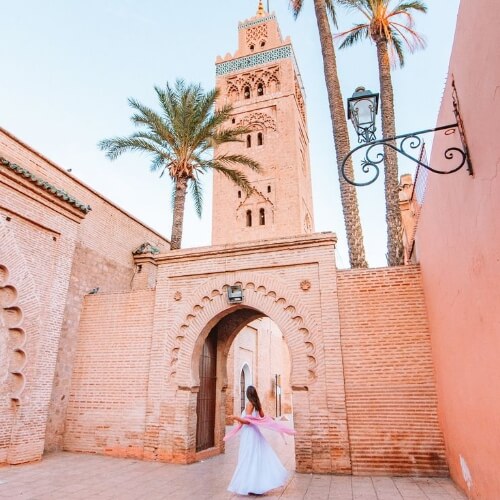
Morocco’s storied history and architectural heritage are reflected in its ancient medinas, majestic palaces, and imposing fortresses, which offer a glimpse into the kingdom’s storied past. As you plan your travels, allow time to just sit and soak up just how very different this country looks and feels.
Explore Morocco’s historical sites, including the UNESCO-listed medinas of Marrakesh, Fes, and Chefchaouen, which are home to ancient mosques, madrasas (educational institutions), and palaces dating back centuries.
Chefchaouen, or the Blue City, is worth building an itinerary around; it’s drenched in lavender-blue paint and tucked in the foothills of the Rif Mountains.
It’s worth noting that Chefchaouen, aka the Blue Pearl or Blue City of Morocco, may not be the most accessible city to visit, but it can be worth building an itinerary around. Yes, it’s over two hours from Tangier and over three hours from Fez, tucked in the foothills of the Rif Mountains. But what a reward you’ll reap if you get there: layers of low buildings – drenched in lavender-blue paint – await, lining narrow streets. Just spending time wandering here and imagining what it would be like to live in this painted town can be a gorgeous way to spend a day. And of course, taking loads of photos to memorialize the fact that, yes, you were actually in this rare and special place.
Architectural wonders also abound in Morocco, such as the Hassan II Mosque in Casablanca, one of the largest mosques in the world, and the Kasbah of Ait Benhaddou, a UNESCO World Heritage site that served as a backdrop for an endless string of movies and TV shows. Without even realizing it, you’ll find your eye attuned to Moorish flourishes: white stucco walls, hidden interior gardens and courtyards, tiles (from floors to roofs), clover-shaped and arched cutouts and windows.
Visiting Marrakesh: The Heartbeat of Morocco
Marrakesh, often referred to as the “Red City,” is a kaleidoscope of sights, sounds, and scents that mesmerizes visitors with its vibrant energy and rich cultural heritage. Whether on a first visit or a return trip, of course, you’ll want to explore the medina, which is the ancient walled part of this old city.
Explore the ancient center of Marrakesh, with its maze-like alleyways, bustling souks, and hidden palaces.
It’s world-renowned as one of the best places in the country. There, you can lose yourself in the maze-like alleyways, where ancient palaces, bustling souks, and hidden gems await. Even a short walk can seem like an adventure. Street food, snake charmers, live music, and main squares await, delighting you with unique, centuries-old architecture. Haggle with local shop owners and vendors (yes, it’s expected), sample traditional delicacies, and immerse yourself in the vibrant tapestry of Moroccan life.
Among the don’t-miss sights:
- Visit Jardin Majorelle: Seek respite from the bustling streets at Jardin Majorelle, a botanical garden oasis adorned with exotic plants, vibrant colors, and the iconic cobalt blue villa. Developed in the 1920s onward, it was the dreamlike creation of the French Orientalist artist Jacques Majorelle, and was saved from destruction in the 1980s, when famed French fashion designer Yves Saint-Laurent bought it and made a home there.
- Discover Bahia Palace: Step back in time at Bahia Palace, a 19th-century masterpiece that showcases Morocco’s intricate architecture and opulent craftsmanship. Marvel at the intricate stucco work, ornate wood carvings, and colorful mosaic tiles that adorn this architectural gem.
- You can’t miss the Koutoubia Mosque. It’s an ancient symbol of the city, dating back to the 12th century, and featuring a Moorish minaret that is visible from miles away.
- The Ben Youssef Medersa is a stunning example of Moorish architecture, constructed by Sultan Abdullah Al-Ghaleb Assaadi in the mid-16th century. This beautifully preserved site shows off sculpted plaster, carved wood, stunning mosaics, and delicate calligraphy.
- While not a landmark per se, why not visit a traditional Moroccan hammam, where you can experience the revitalizing effects of a steam bath, followed by a Ghassoul clay wrap treatment. This natural volcanic clay, sourced from the Atlas Mountains, is renowned for its purifying and skin-softening properties.
What to Buy at the Souks
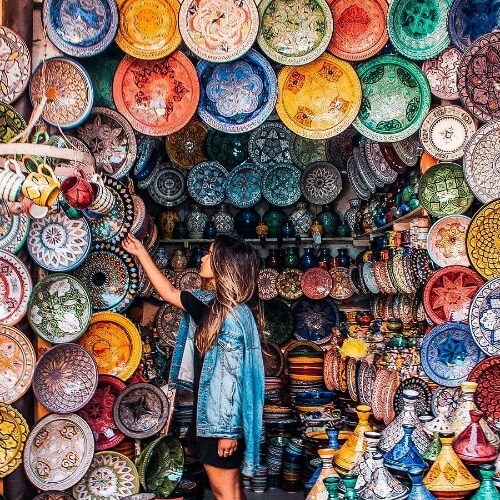
The open-air marketplace or souks of Morocco are a wonderful way to get immersed in the culture of Morocco. From intricately woven textiles and gleaming lanterns to aromatic spices and handmade pottery, Marrakesh’s souks offer a treasure trove of souvenirs and unique gifts to take home, but even if you don’t buy a single thing (we dare you not to!), getting lost in these sprawling markets is a great way to spend a couple of hours.
- Of special note are the leather goods available. The leather tanneries of Marrakesh are a marvel, and you can shop for bags, belts, and shoes, crafted by skilled artisans using traditional techniques. Pointy-toed slippers, called babouches, in brilliant shades of hot pink, green, and blue, are a great souvenir.
- You’ll also want to check out the beautiful ceramics – you’ll find lovely small bowls. Or perhaps a classic glazed tagine pot, with its conical shape, designed to hold in moisture – can be a wonderful item to take home (carefully), whether in classic, chestnut clay or intricately painted with a pattern.
- Many shoppers love the textiles too and come home with beautifully woven Moroccan rugs, blankets or coverlets, and pillowcases.
- Take in the heady scents as you explore Rahba Kedima, the apothecary square. You’ll see an amazing array of spices (like ras al hanout), herbs, roots, leaves, and petals.
Don’t leave without a pair of supple leather babouches, or pointy-toed slippers, in a brilliant color.
Bargaining is part of the scene; travelers report being able to score prices a third of what the vendor originally quoted. If you’re not the type for much back-and-forth (and a seller telling you that the price you offered was “crazy,”), you can simply ask, “What is your final price?” and see if you can snag a deal. If not, say thank you and continue exploring.
Best Restaurants in Marrakesh
- Le Jardin: Indulge in a culinary journey at Le Jardin, a hidden oasis tucked away in the heart of Marrakesh’s medina. Dine amidst lush greenery and soothing fountains as you savor delicious Moroccan cuisine with a modern twist. Zucchini fritters with goat cheese and a variety of couscous dishes are among the raved-about favorites.
- Nomad: Enjoy panoramic views of Marrakesh’s bustling square from the rooftop terrace of Nomad, where you can sample innovative dishes inspired by traditional Moroccan flavors. Don’t miss the grilled marinated lamb chops.
A Primer on Moroccan Food
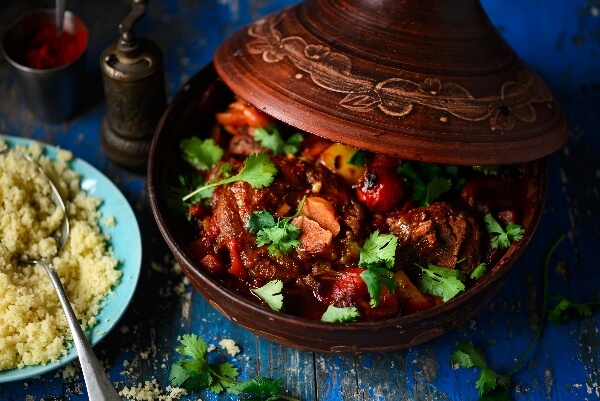
Morocco is a great place to eat well. Delicious food is everywhere, from simple stalls to fine restaurants. While you will see burgers and other Western foods on many menus, hey: You’re halfway around the world – try the local specialties. Here’s a glossary on what you’re likely to find — and love:
Mint tea is a symbol of Moroccan hospitality – drink it often, everywhere you go.
- B’ssara: A delicious dried bean soup
- Couscous: A type of tiny semolina-based pasta, served with delectable cooked meat and/or vegetable toppings
- Tagine: The famous traditional Moroccan stew, cooked in a conical clay pot. While the ingredients will vary (lamb, chicken, and beyond), the signature spices used often include ginger, cumin, coriander, saffron, cinnamon, paprika, chiles, and ras el hanout (a blend of dozens of other spices). In addition to those aromatics, preserved lemon, prunes, olive, and almonds may make an appearance.
- Fish chermoula: Marinated grilled fish, served with chermoula sauce, made from fresh herbs such as parsley and cilantro, with garlic and citrus juices.
- Makouda: Little deep-fried potato balls served with dipping sauce. A not-to-be-missed street food.
- Medfouna: Popular in the villages, this is sometimes described as Berber pizza. It’s flatbread dough stuffed with spiced meat and vegetables, but no cheese
- Merguez: North African lamb sausage
- Mint tea: This hot beverage is a symbol of Moroccan hospitality and tradition – you’ll enjoy it almost everywhere you go. It’s typically made with green tea, fresh mint leaves, and sugar.
Exploring the Atlas Mountains
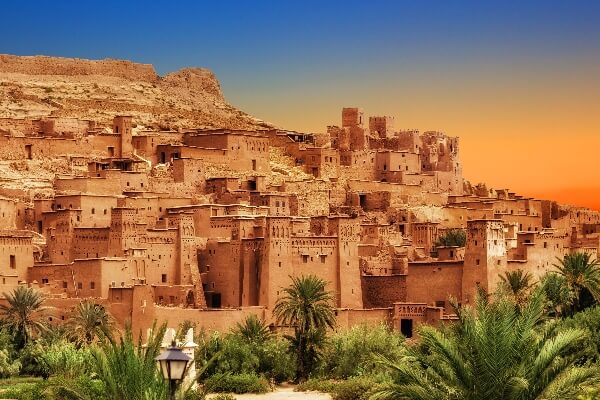
Weaving across 1,200 miles through Morocco, Algeria, and Tunisia, the Atlas Mountains are an iconic site in North Africa. They separate the Sahara Desert from the Mediterranean Sea and Atlantic Ocean – and the foothills await just an hour or so from Marrakesh.
On NextTribe trips, we stop at the enchanting Jardin Bio Aromatique Ourika, where the lush landscapes provide the perfect backdrop for learning about Argan oil production and the cultivation of saffron, the spice known as Morocco’s red gold.
The Anima Andre Heller Garden is another gorgeous spot: An extraordinary botanical garden dotted with playful, imaginative sculptures and color-drenched art installations. (Free shuttle buses are available from Marrakesh.)
Tucked in the Atlas Mountains is Anima Andre Heller Garden, an extraordinary botanical garden, dotted with playful sculptures.
For those with more time to spend exploring, you can delve deeper into this stunning Tassaout Valley. The drive there can treat you to stunning panoramic views of the rugged mountains; plan to spend a night or two in this serene area where the villages give you a sense of time slowing down as you breathe that ultra-clean mountain air). You’ll see rushing streams and waterfalls nearby, and curious goats wandering around, going about their goat business. Have a traditional meal with a local Berber family and learn more about their lifestyle. Couscous or a tagine are likely to be on the menu.
Another option, cribbed from NextTribe trips to Morocco: Stay at an ecolodge in Douar R’bat as you make your way through the Atlas Mountains. Here, more immersive experiences can be had, such as bread-baking and couscous-making with age-old techniques; leisurely hikes; soothing tea rituals; henna sessions. Visiting the local women’s cooperative funded by Atlas Outdoor can be a fascinating way to learn soap-making and other skills, connecting with local women and the time-honored culture while supporting sustainable tourism practices.
While exploring the hills, don’t miss the oasis of Skoura, an enchanting town renowned for its shady palm groves, historic kasbahs, and traditional mud-brick architecture. This lush bit of landscape provides a dazzling contrast to the craggy and foreboding Atlas Mountains.
Best Things to Do in Morocco: A Desert Camp Experience
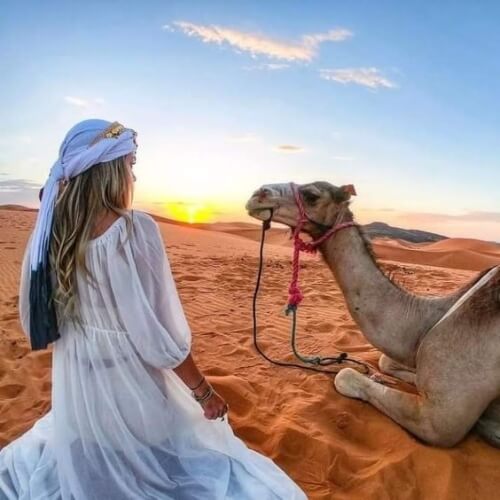
Are you ready for some of Morocco’s most dramatic and memorable landscapes? Leave the fertile oasis in your rearview mirror and head towards the starkly beautiful expanses of the desert.
The town of Merzouga can be a good place to start: It’s a key gateway to Erg Chebbi, an unforgettably, overwhelmingly vast stretch of sand dunes that will make you feel as if you’ve walked into your favorite set-in-the-desert film.
A camel ride can give you a taste of ancient, authentic Moroccan life as you explore the mysterious dunes. The rhythmic sway of these huge and magical creatures as you make your way across the desert is one of those “am I dreaming?” moments.
A camel ride can give you a taste of ancient, authentic Moroccan life as you explore the mysterious dunes.
If you’re camping out (as NextTribe groups do), you can see a spectacular sunset, as the sun drifts into the horizon, casting golden hues over the vast sea of sand. Gather for a Moroccan feast, and sit by a campfire under the stars, accompanied by local music that echoes across this otherworldly landscape. After that, you can revel in the silence and solitude of this incredible landscape. Now you know what it feels like to be a nomad, centuries ago.
Active Travel: Reveling in Nature
Visiting Morocco isn’t just about taking in the views, the history, and the culture. It’s also a paradise for those who like to be on the move.
Stroll or hike around snow-capped peaks, lush valleys, and picturesque villages.
The Atlas Mountains beckon with snow-capped peaks, lush valleys, and picturesque villages await. Places to stroll and hike include:
- Toubkal National Park: Trek to the summit of Mount Toubkal, the highest peak in North Africa, and be rewarded with panoramic views of the surrounding mountains and valleys. Explore the rugged terrain, encounter local wildlife, and immerse yourself in the natural beauty of this pristine wilderness.
- Ourika Valley: Embark on a scenic hike through the Ourika Valley, where verdant landscapes, cascading waterfalls, and traditional Berber villages attract adventurers. Discover hidden gems along the way, from secluded mountain streams to ancient terraced fields.
You don’t have to go adventuring on your own steam. You’ll find thrilling 4×4 rides through the Sahara, showcasing the vastness of this desert.
Immersive Experiences in Morocco
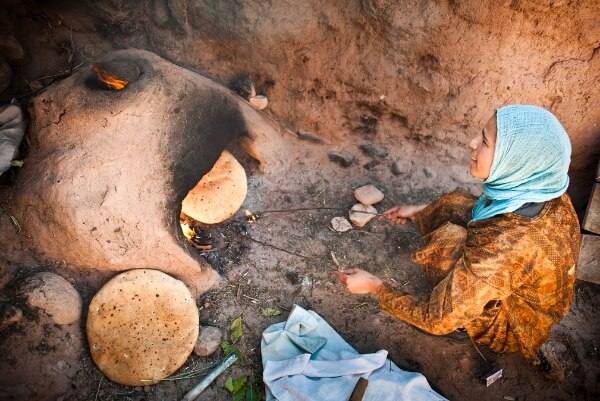
There are incredible, hands-on opportunities all over Morocco. We’ve highlighted a few already.
If you venture to Ouarzazate, you’ll transition from the ethereal landscape of golden dunes in the desert to the stark, rocky landscapes. There, you can visit a women’s cooperative that specializes in the production of spices.Have you ever wondered how your favorite spices wind up in those jars? Here, you’ll discover the intricate processes of growing, harvesting, and preparing spices, and learn about their traditional uses and medicinal benefits.
Have a hands-on adventure: Moroccan women can show you the intricate process of growing, harvesting, and preparing spices.
This experience not only deepens your understanding of local customs and culinary practices but also highlights the role of women in sustaining and sharing cultural and economic practices within their community.
Morocco is a land of contrasts and contradictions, where ancient traditions coexist with modern-day marvels, and natural wonders abound. From the vibrant streets of Marrakesh to the silent sands of the Sahara desert, each destination offers a unique glimpse into both the past and present – and has the power to send you home with a fresh perspective on your place in the world.

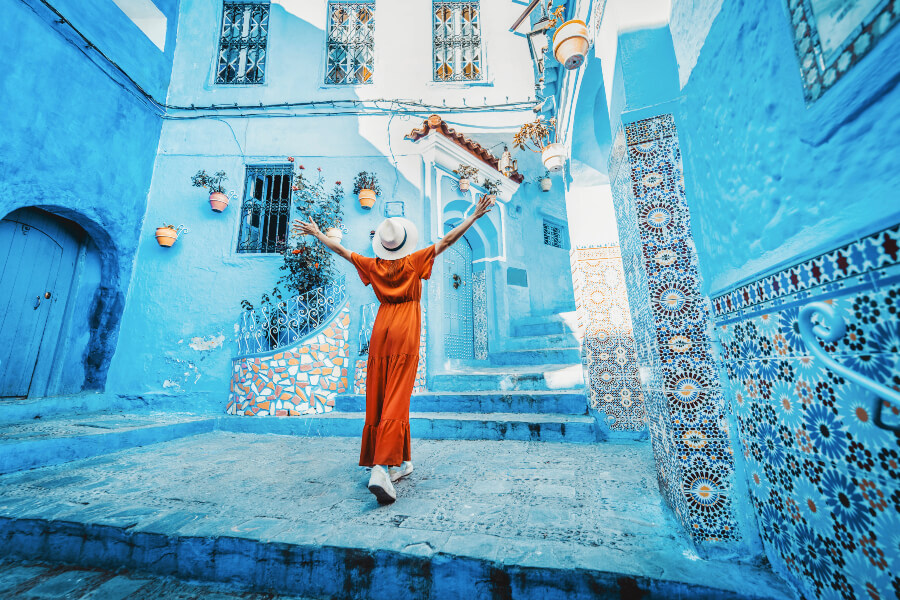

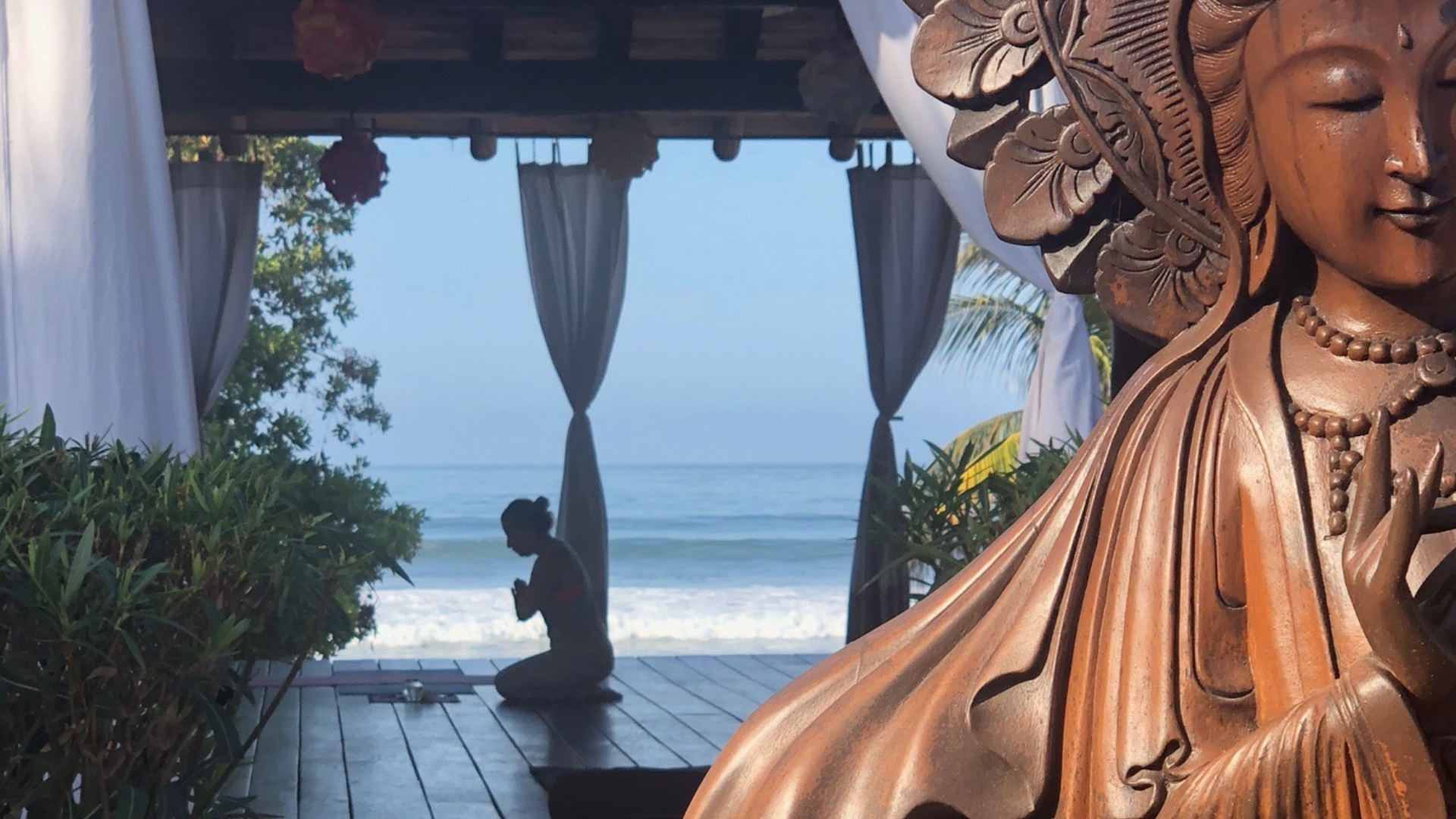
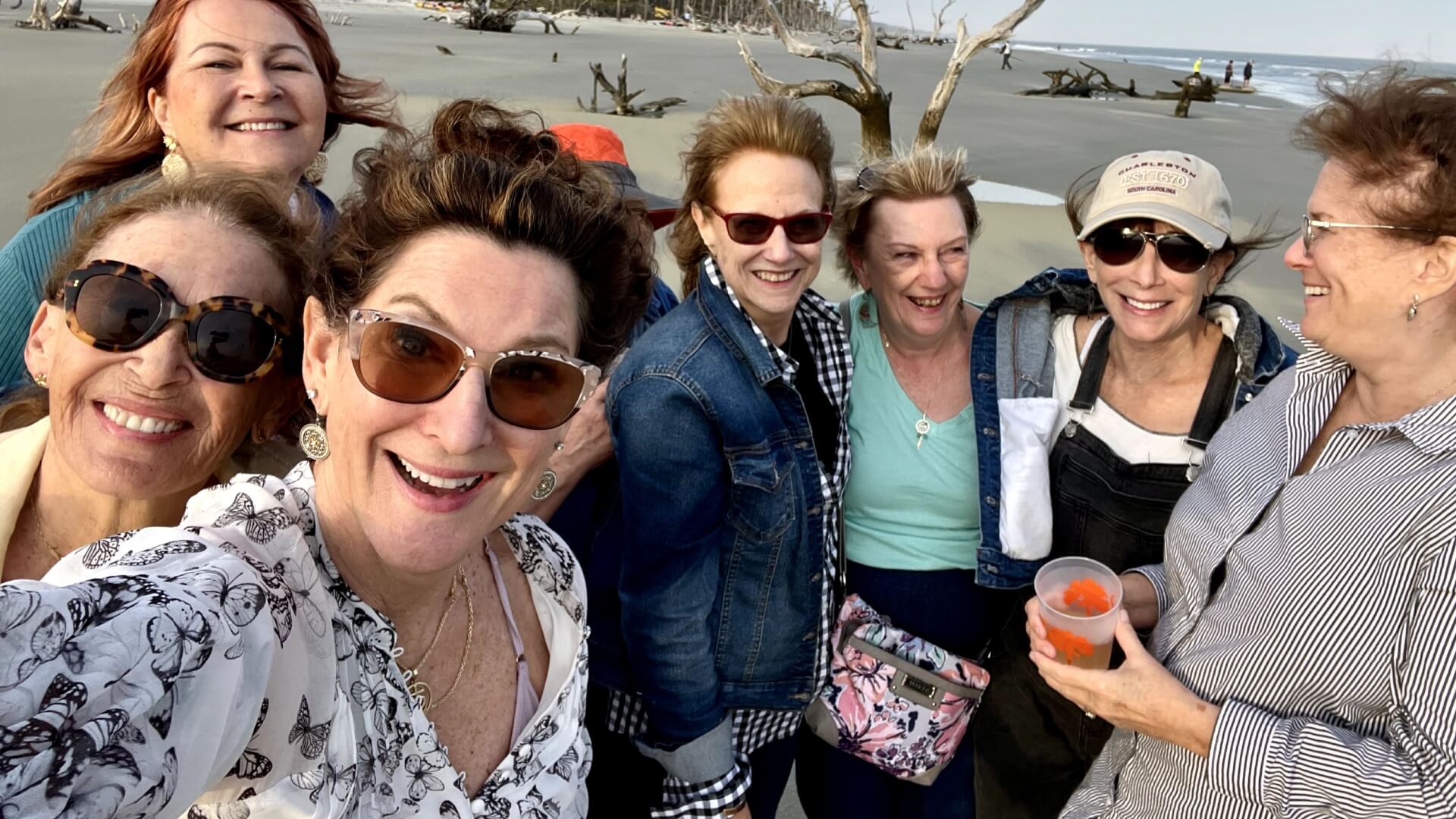
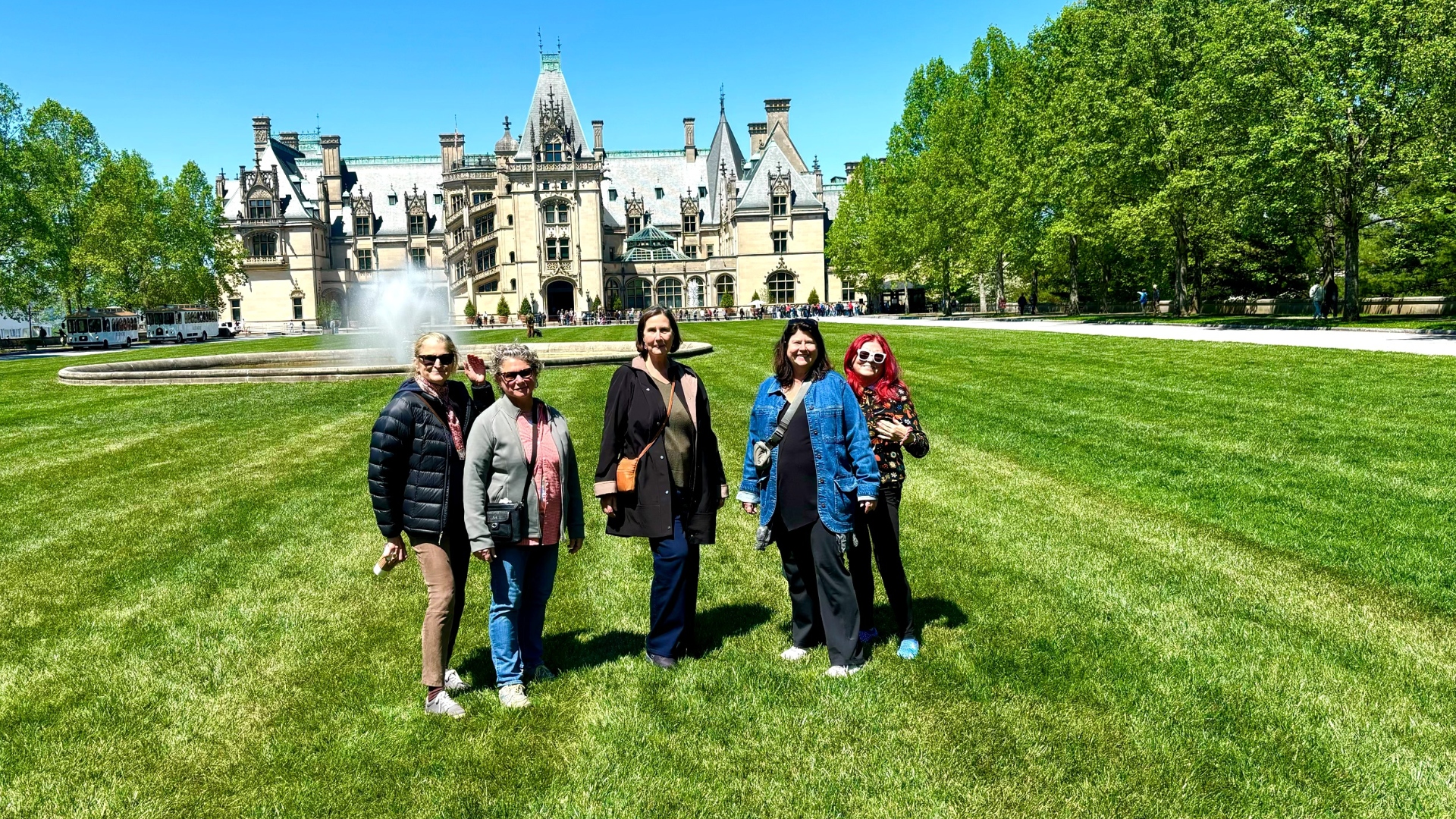

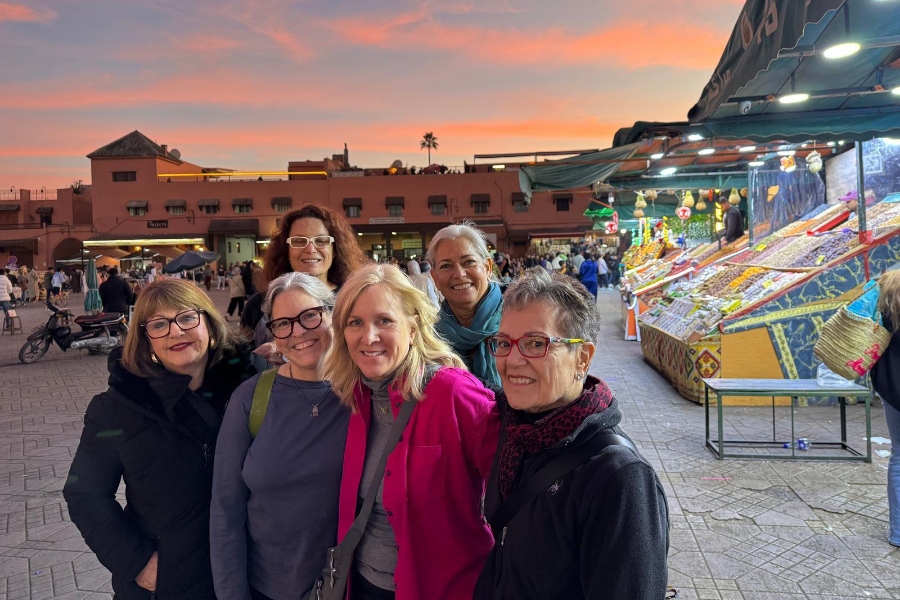
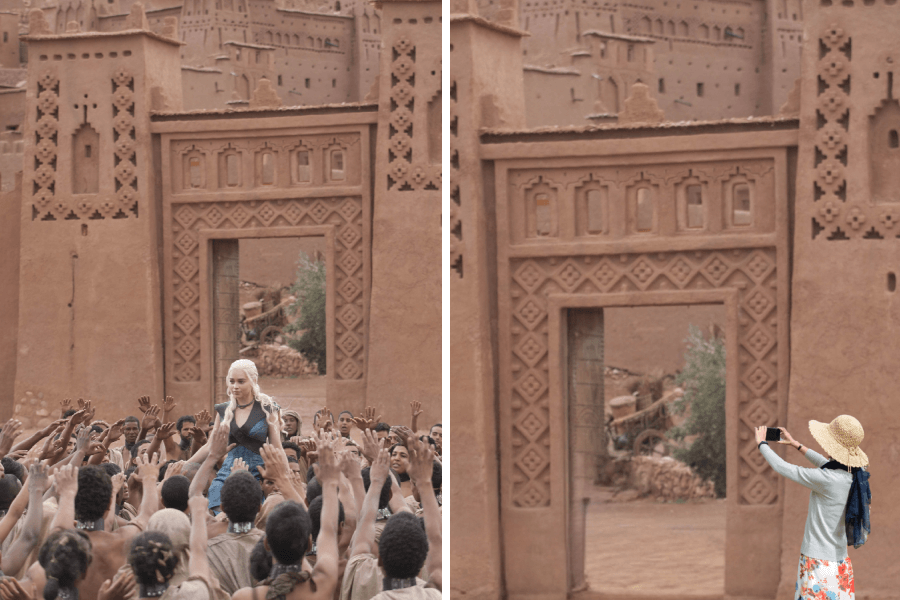

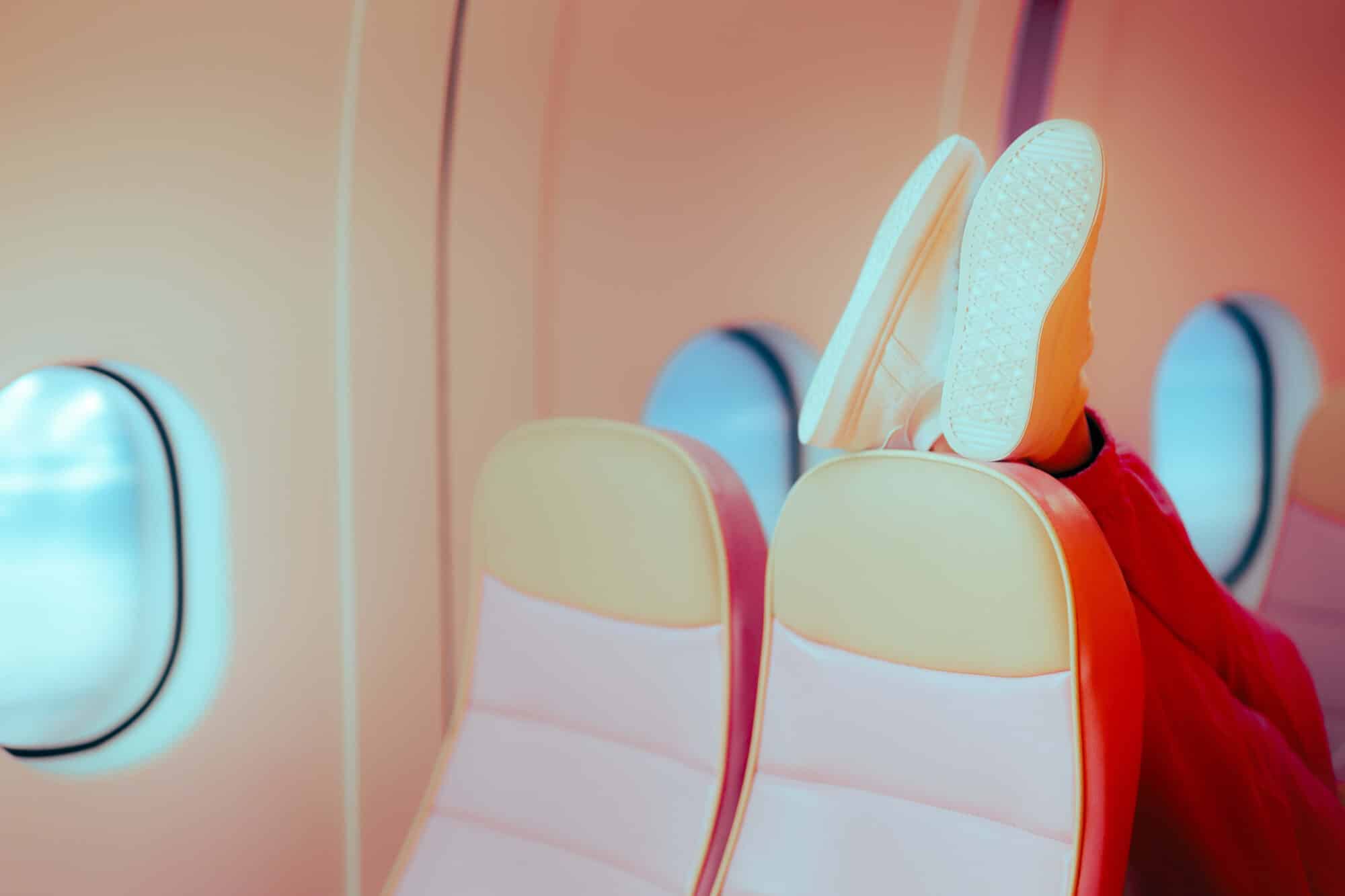
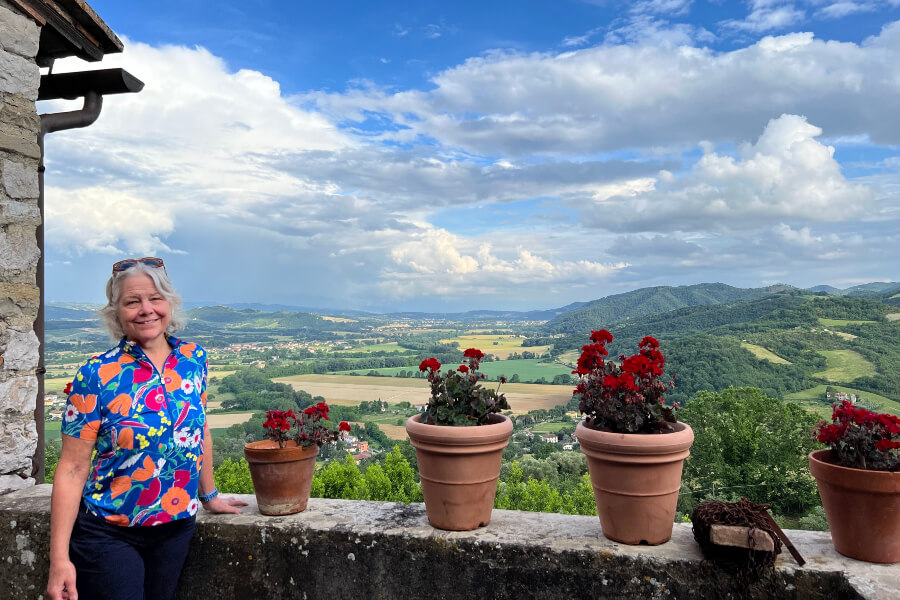
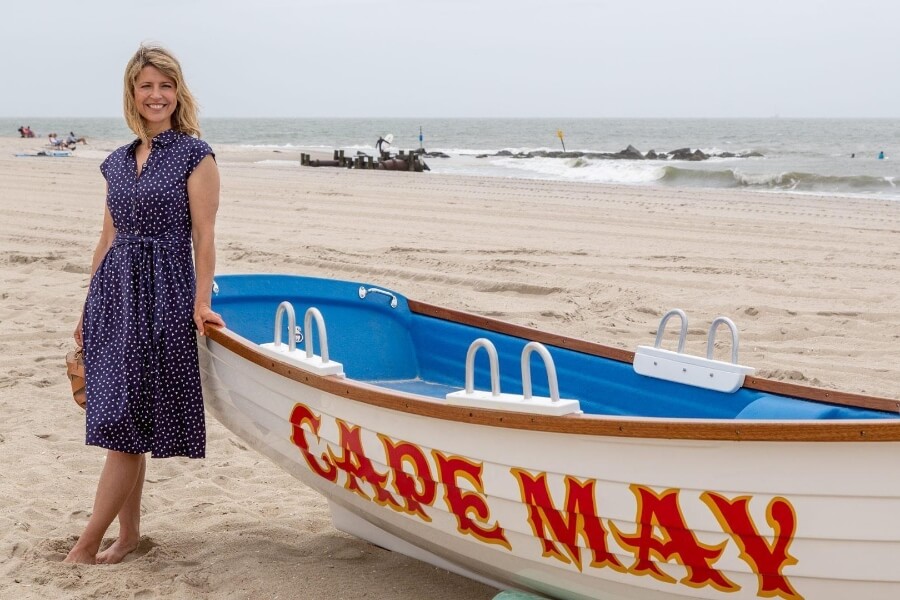
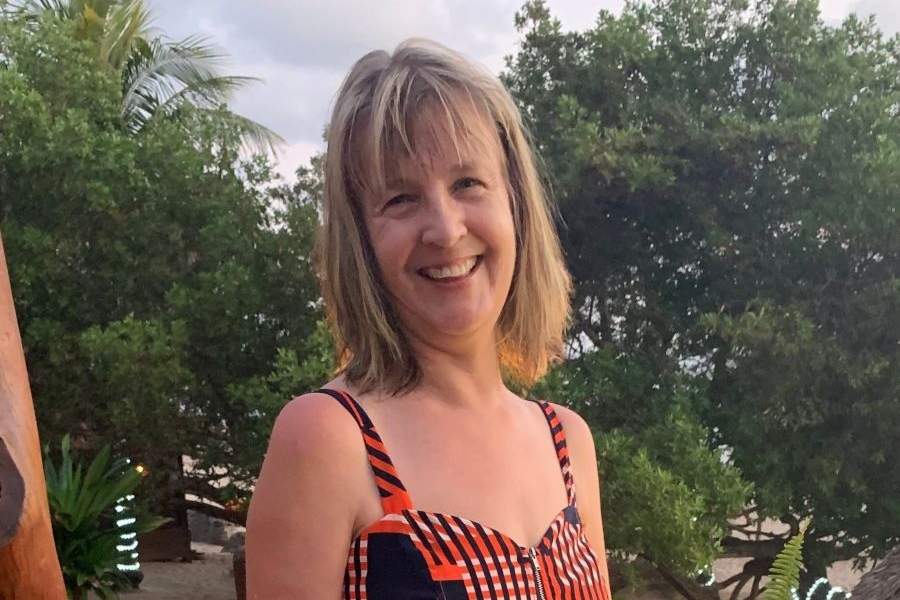
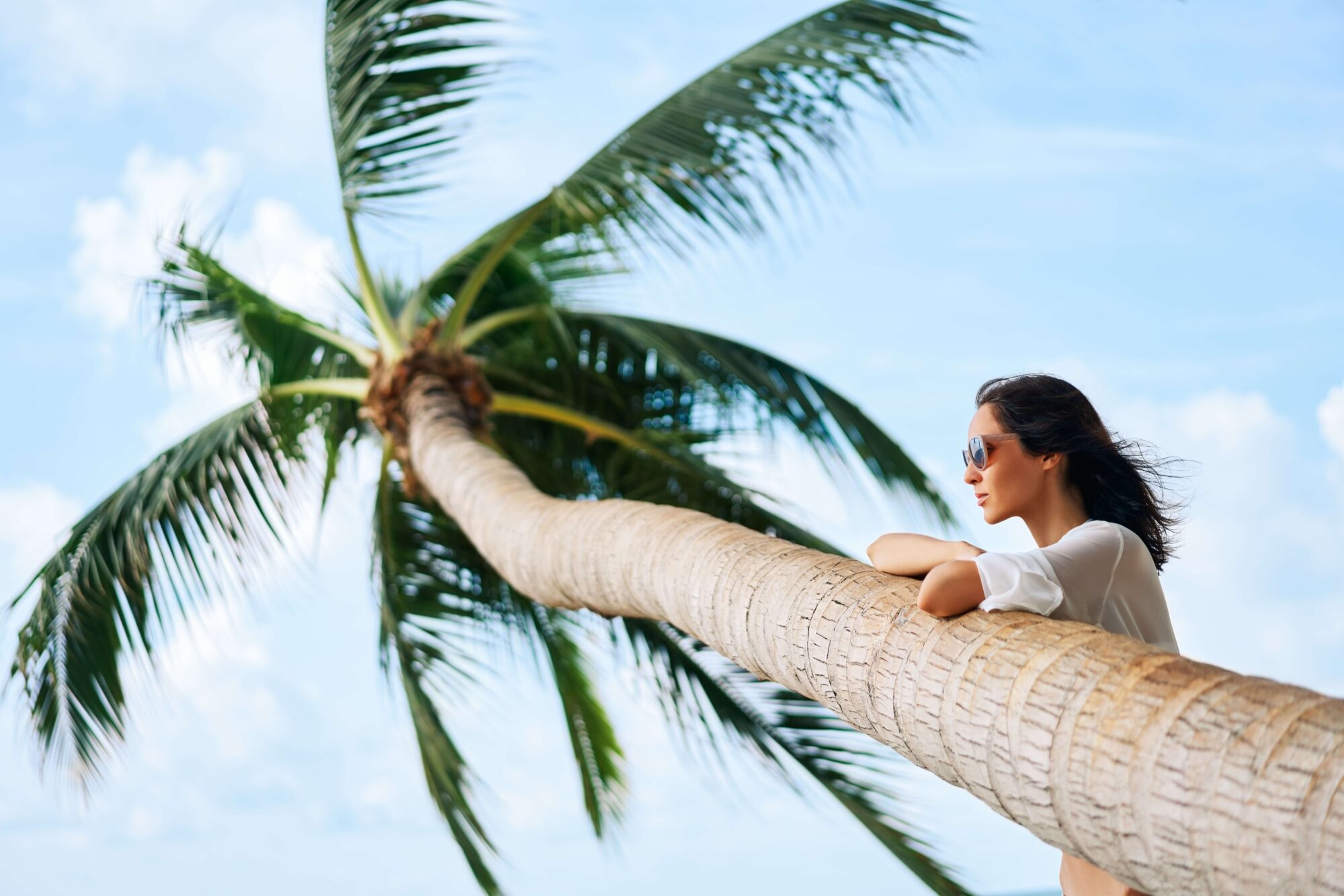

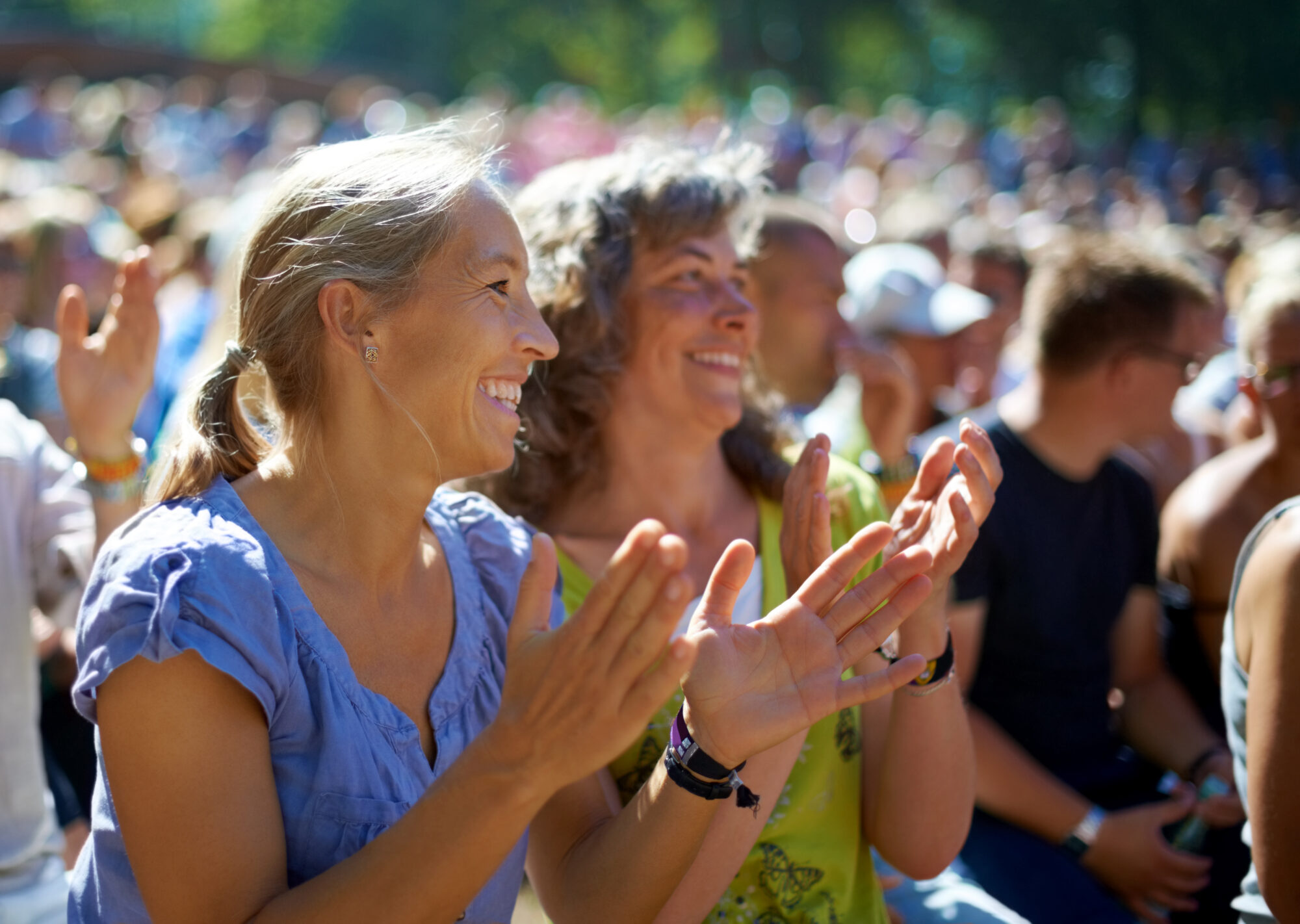
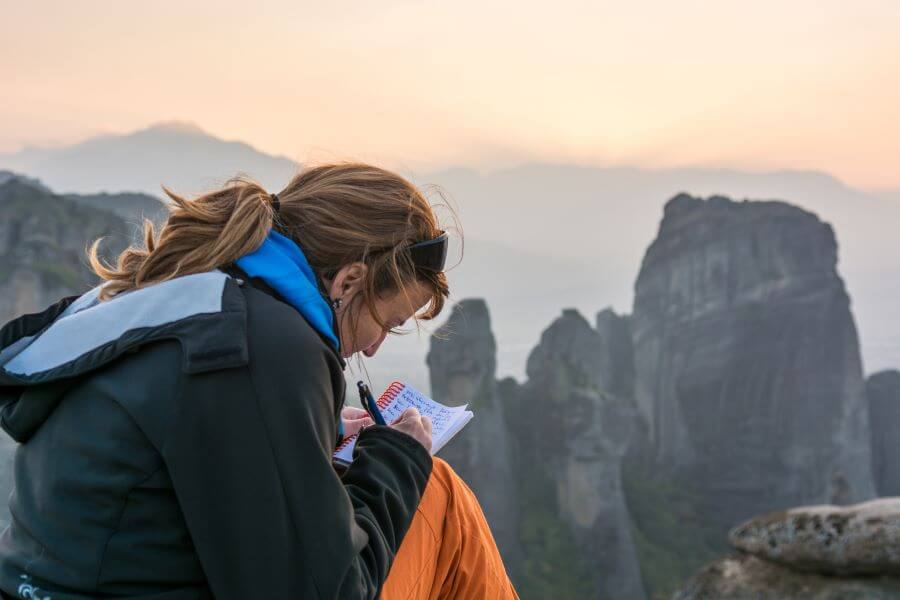




0 Comments